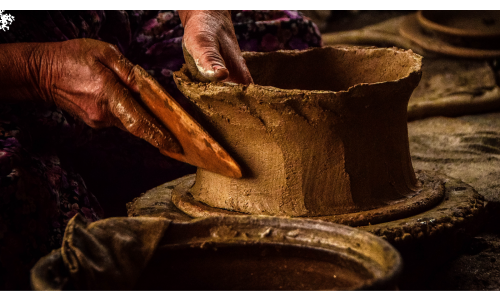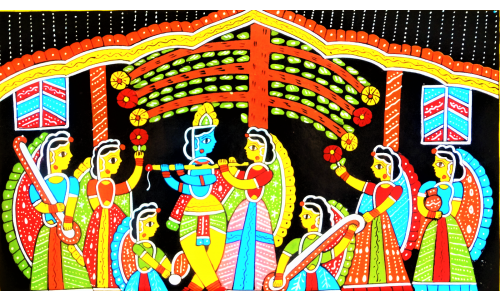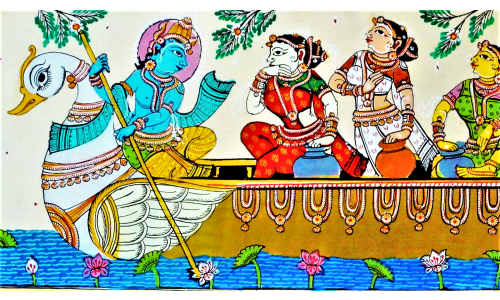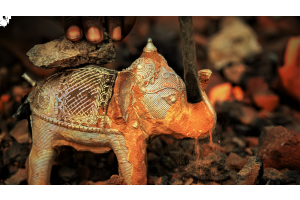Monthly Archives: December 2020
-
Categories: HandicraftsPosted: December 30, 2020Comments: 0
Longpi is one of the rarest form of pottery in the world, it doesn't use the potter's wheel but instead use molds and the artists adept graceful hands to produce these creations. Another specialty of these vessels is that they are purely made of stones. These pristine vessels are not only used for their unmatched utilitarian values but also its appearance is considered grandeur at auspicious festivals.
Longpi is where you can re-discover yourself with an earthy touch, enjoying the serene beauty. Longpi is commonly attributed to refer to two villages in Ukhrul District - Longpi Kajui and Longpi Khullen. These two small villages in the hinterlands of mystical Indian state of Manipur is now making national and international attainments with its sassy yet customary Black Stone Pottery or "Longpi Hamlei".
If you think that the dark charcoal colour results from colouring you are MISTAKEN! The potters use Lison, naturally black serpentinite stone found in Kapungrum, Ukhrul and
-
Categories: HandicraftsPosted: December 14, 2020
“A Journey from Forehead to Décor”
Small, yet powerful and integral part of Indian culture “Bindis” also known as “Tikuli” in Bihar influence the “tikuli art”. Since time immemorial bindi has been used to embellish the beauty of Indian women and these colourful dotted accessories has been the symbol of intellectual capacity of the better half of Indian population so the origin of this art form coming from the birth place of Sita is no surprise.
Tikuli Art achieved wide recognition in 1982 when India's then Prime Minister Indira Gandhi gave Tikuli art as a gift to the players of Asian Games.
Origin
Tikuli art finds its root in the Patna situated in the eastern part of India and is considered to be as old as 800 years. These paintings were the artistic expressions of women folks using their bindies to portray the local context and their daily lives. In those times its popularity was so immense, that traders from across the world use to buy
-
Categories: HandicraftsPosted: December 14, 2020
“If an image has to be made, it must be made of wax first” Vishnusamhita, 5th century AD
Dokra (also spelt Dhokra) is non–ferrous metal casting using the lost wax casting technique. This sort of metal casting has been used in India for over 4,000 years and is still used. One of the earliest known lost wax artefacts is the dancing girl of Mohenjo-Daro. Dhokra Damar tribes are the traditional metal of West Bengal. Their technique of lost wax casting is named after their tribe, hence Dhokra metal casting. The tribe extends from Jharkhand to West Bengal and Odisha and the artisans still use this technique to create enchanting artefacts and receives a lot of love and appreciation for its primitive simplicity, enchanting folk motifs and forceful form.
Craftsmen involved in the making of Dhokra rely on materials at their immediate disposal – wax, resin and firewood from the forest, riverbed clay and a firing oven made by digging a hole in the ground. Such res
-
Categories: HandicraftsPosted: December 14, 2020
Pattachitra is the art of traditional, cloth-based scroll painting originated in state of Odisha (formerly known as Orissa). The name comes from the word ‘Patta,’ the Sanskrit word for ‘cloth’ and ‘Chitra,’ picture. These paintings are based on Hindu mythology and specially inspired by Jagannath and Vaishnava sect.
Origin
On the Debasnana Purnima day (Full moon day of Jyestha month), the Gods of Jagannath, Puri, have a ritualistic bath to fight the heat of summer. As a result the deities become sick for fifteen days, i.e., the first fortnight of Asadha. During this period, known as Anasar, the devotees don’t have Darshan of their beloved Lord at the Ratnavedi. Instead, three paintings, of Lord Jagannath (a form of Krishna), Lord Balabhadra and Maa Subhadra, in the colours black, white and yellow respectively, are worshipped. Such paintings, known as “Anasar Patti”, are made by traditional Chitrakaras of Orissa, who are experts in the art of Pattachitra. Patta pa









